Tutankhamun’s Sarcophagus – Explore the King Tut Sarcophagus
A couple of years after Howard Carter and his team first discovered Tutankhamun’s tomb, they uncovered the magnificent Tutankhamun sarcophagus. Inside King Tut’s sarcophagus were three coffins inside of each other, with the innermost coffin featuring the famous Gold Funerary Mask. But, what did King Tut look like in real life, and why is Tutankhamun’s sarcophagus so famous?
The Story of Tutankhamun’s Sarcophagus
| Discovery | Tutankhamun’s Sarcophagus |
| Discovered By | Howard Carter (1874 – 1939) |
| Materials | Gilded wood and precious stones |
| Dimensions (cm) | 223 x 83 x 105 |
| Currently Housed | Grand Egyptian Museum, Giza, Egypt |
How was King Tut’s sarcophagus found, and how long did it take to discover Tutankhamun’s tomb? It all began when a man named Howard Carter set out to discover Tutankhamun’s tomb during a period when many other tombs had recently been found. Howard Carter was an Egyptologist and archeologist from England.
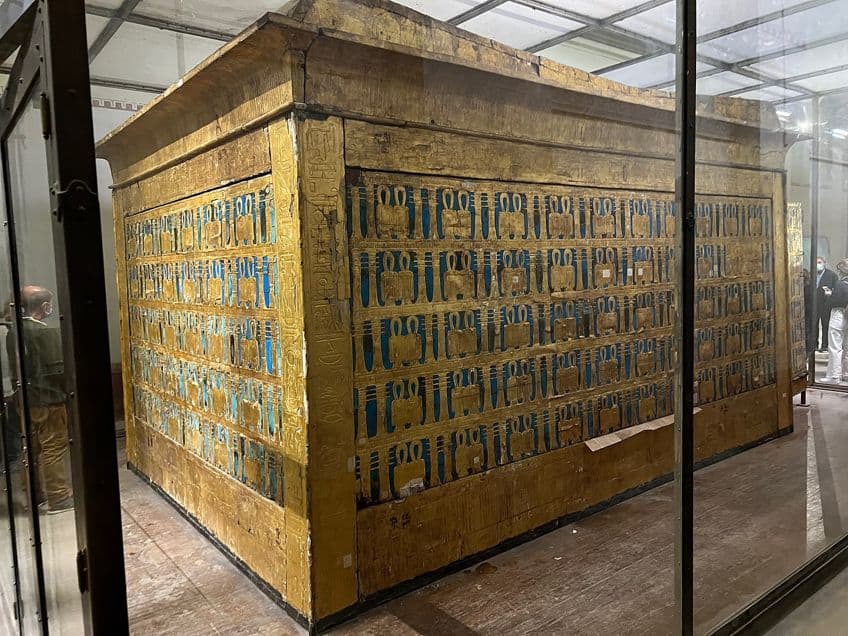
The Discovery of King Tutankhamun’s Tomb
Howard Carter started working for Lord Carnarvon in 1907 when he was hired to manage the excavations of the tombs of nobles in Deir el-Bahri, nearby Thebes. The Egyptian Antiquities Service’s head, Gaston Maspero, had suggested Carter to Carnarvon because he believed Carter would use the most modern archaeological techniques and recording systems. Carter promptly established an excellent working rapport, and over the next 16 years, the two worked together with varying success but were always bound not more by their shared goal than by their mutual admiration and respect.
Lord Carnarvon obtained the authorization to excavate in the Valley of the Kings in 1914.
Carter oversaw the project, which involved a thorough search for any tombs overlooked by earlier expeditions, including that of Tutankhamun. Yet, the excavations were abruptly halted by the First World War, with Carter serving for the British Army as a translator and diplomatic courier during the war years. He eagerly continued his excavating operations near the end of 1917. Lord Carnarvon was frustrated with the lack of discoveries after many years of searching.
After contemplating pulling his funds, Carnarvon opted to sponsor one more year of work in the Valley of the Kings after meeting with Carter. He returned to the valley, exploring a series of huts he had abandoned a few years before. The huts and rock fragments beneath were excavated by the workers. On the 4th of November, 1922, their water boy tripped on a stone that revealed the top of a series of steps carved into the bedrock. Carter excavated the steps partly till the roof of a mud-plastered entryway was discovered. Carter ordered the stairs to be refilled and issued a telegraph to Carnarvon, who traveled from England a couple of weeks later on the 23rd of November.
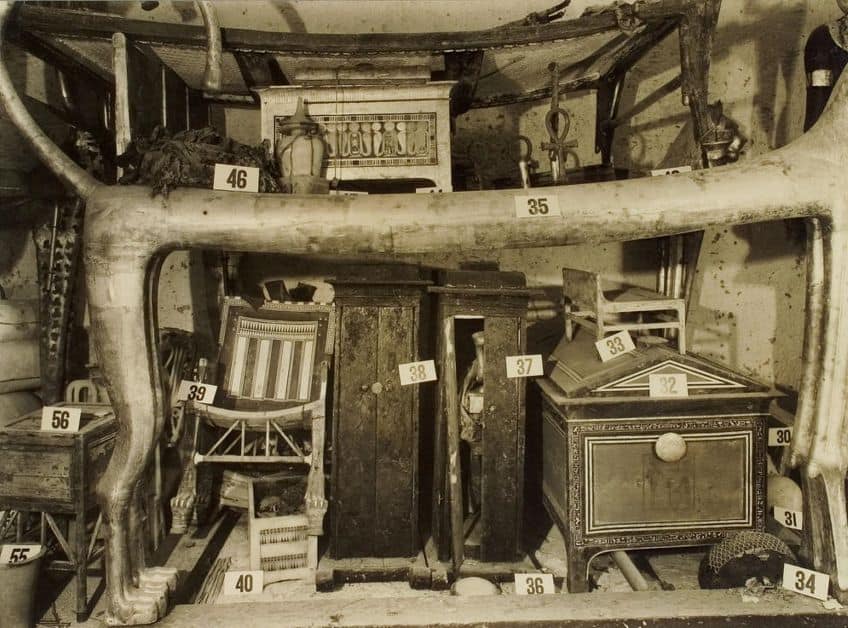
On the 24th of November, 1922, the whole staircase was cleared, and a seal bearing Tutankhamun’s cartouche was discovered in the entryway. Carter cut a small crack in the upper left-hand corner of the entryway on the 26th of November, with Carnarvon in attendance, utilizing a chisel that his grandmother had bought him for his 17th birthday. Using a candle, he was just able to see that most of the gold and ebony artifacts were still there. He wasn’t sure if it was a tomb or just an ancient cache, but he did see an intriguing sealed entry between two sentinel sculptures. The tomb was then sealed for the next day’s entry in the required company of an Egyptian Department of Antiquities officer. Callender installed electric lights, which illuminated a large collection of artifacts such as chests, golden couches, thrones, and shrines.
When an Egyptian pharaoh ascended to the throne, the first thing he did was start construction on a tomb. It would also take years, and many pharaohs felt they had sufficient time before death. Tutankhamun died when he was extremely young, thus his tomb had not yet been finished, and he was interred in a smaller one destined for someone else. Howard Carter had difficulties discovering it since it was among three other enormous tombs, and dirt and sand had obscured the doorway. Howard Carter was pleased to discover the tomb’s seals still intact until he discovered holes suggesting that it had been forced into at least twice after Tutankhamun’s death.
The intruders stole money, semi-precious stones, and fragrant oil. Fortunately, they did not have the opportunity to remove anything else, and the tomb was filled with artifacts that gave researchers knowledge about Egyptian life.
The Egyptians interred their dead with several burial items they thought would be required in the hereafter. Everyday things like lamp stands, lamps, candles, chairs, linens, and writing implements were found in the tomb. There were also games, weapons, fans, chariots, deity sculptures, and many forms of gold jewelry. The discovered musical instruments are likely to be among the oldest known instances of trumpets.
Discovery of King Tut’s Sarcophagus
Tutankhamun’s sarcophagus was not the first thing discovered in the tomb by Howard Carter, but it became the most renowned. Although excavations on Tutankhamun’s tomb started in November of 1922, they were unable to reach the Burial Chamber, which housed the sarcophagus, until February 1923. The very first thing they discovered was the massive shrine constructed of wood and gold that enclosed the tomb. It was nine feet in height and so long that it left only a couple of feet on either side of the chamber. When people hear the term King Tut, they immediately think of the funerary mask. It was set with semi-precious stones and elements obtained in Egypt to generate brilliant colors: quartz, lapis lazuli, obsidian, and carnelian. A cobra and the head of a vulture sit on top, representing the kingdoms of Lower and Upper Egypt. On the rear is an inscription asking the gods to guard the mask.
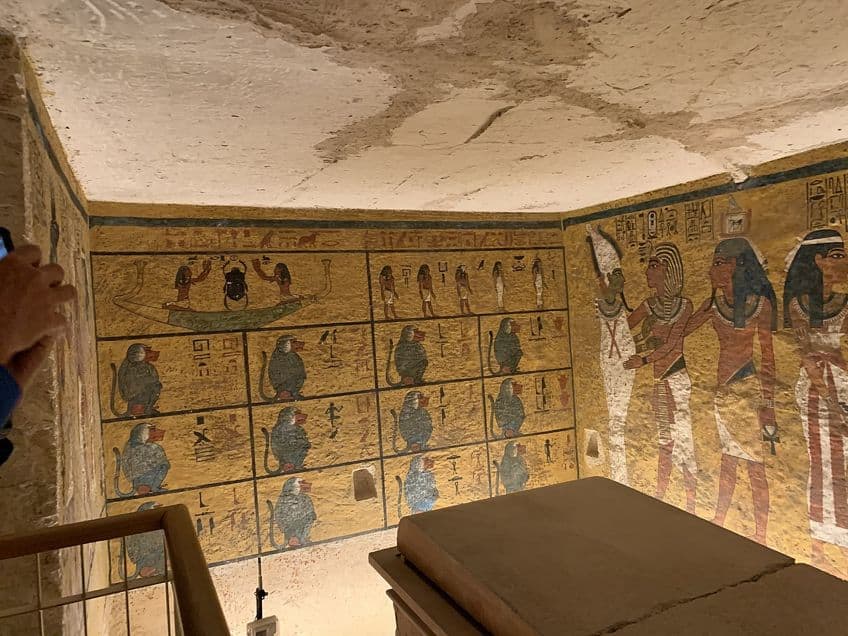
Modern Restoration of the Coffin
Inside King Tut’s sarcophagus was a series of three coffins, each inside of another. In 2019, the golden coffin of the young king was transferred from his tomb to the Grand Egyptian Museum for restoration work. The gold exterior casket was adorned with complex decorations and inscriptions, including scenes from the Book of the Dead and representations of the deity Osiris. The second coffin, which was similarly constructed of gold, had comparable ornamentation and inscriptions.
The innermost coffin, constructed of pure gold, was the most elaborate of the three, with a life-sized mask of the pharaoh, also made of solid gold, covering the mummy’s upper body and head.
The coffin was repaired for the first time since it was found in 1922. It had been heavily damaged, with cracks in the gilded layer of plaster and an overall deterioration in all golden layers. Since 1922, many people have visited the tomb, eroding its historical artifacts. A nine-year conservation project ended in January 2019, restoring Tutankhamun’s tomb to its former grandeur.
Why Tutankhamun’s Tomb Was Created
Tutankhamun was an 18th Dynasty Egyptian emperor who reigned from around 1332 to 1323 BCE. He was born in approximately 1341 BCE and succeeded Akhenaten as Pharaoh at around nine years of age. His mummy has been the object of many analyses, and its study has revealed crucial information about the young king’s health and appearance. The young Pharaoh was roughly 1.67 meters tall, with a club foot that would have made walking challenging for him. Some academics suggest he passed away as a result of complications from a fractured leg, whereas others claim he was murdered. Another hypothesis is that he passed away as a result of an illness or infection. However, the most recent theory states that he died as a result of a combination of factors, including malaria and sickle cell anemia.
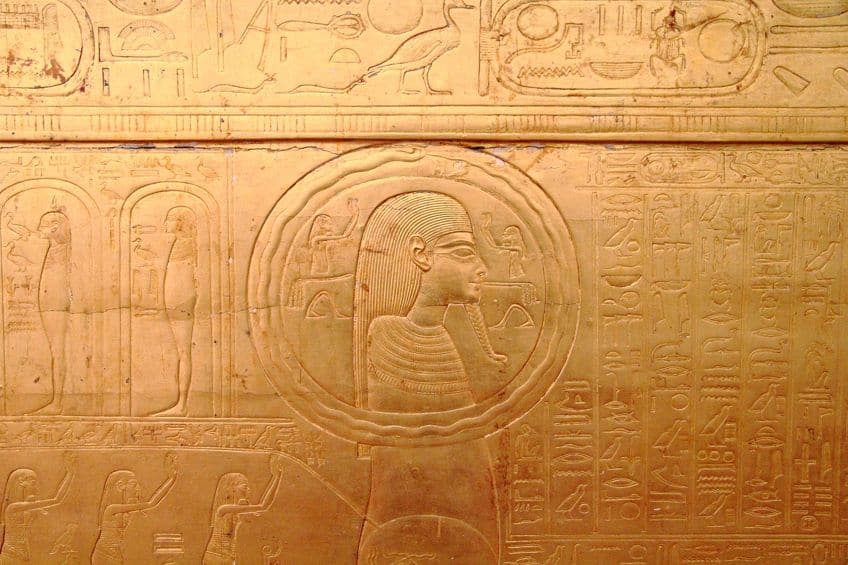
Mummification was used by the ancient Egyptians to conserve the body for the afterlife. Their traditions maintained that the body was a crucial component of the soul’s voyage in the afterlife and that the body had to be preserved so that the soul could exist eternally. It was a time-consuming and complicated process that included separating the inner organs, drying out the corpse, and then dressing it in linens: it was dried with a naturally occurring salt and resin mixture, and then to keep the body intact and prevent it from deterioration, the dried body was bound in linen bandages covered with resin. Mummification was not limited just to pharaohs or the privileged; it was practiced by people of all social strata in ancient Egypt. It was an expensive process, with the cost set by the individual’s wealth, but it was regarded as an essential investment in the hereafter.
Tutankhamun’s sarcophagus is one of the most significant findings in the history of Egyptology, along with Tutankhamun’s tomb. Used to house the mummy of the frail young Egyptian king, it would only be rediscovered by Western eyes in the 1920s, although there were signs that it had been entered several times before. What archeologists found was an incredible collection of ancient artifacts, as well as the young King Tut’s sarcophagus. Inside were several ornate coffins, each more elaborate than the next, with the last being the most striking and beautiful. Inside the final coffin was the mummy of the boy king, covered with a golden funerary mask.
Frequently Asked Questions
What Did King Tut Look Like?
There are no surviving images of King Tut’s actual appearance from his own time. However, it is assumed that Tutankhamun had a considerably elongated head, as well as an overbite based on his death mask and corpse. He is also supposed to have been about 5 feet and 6 inches tall, and lightly built. He was afflicted with a clubfoot, which may have prevented him from taking part in military operations.
How Was King Tutankhamun’s Tomb Found?
The tomb of King Tutankhamun was found in 1922 by Howard Carter, an archeologist from Britain. He had been working in Egypt for a while when he was chosen to head an expedition to discover Tutankhamun’s tomb by Lord Carnarvon, an affluent British collector. The Valley of the Kings, where many pharaohs were interred, was the site of a prolonged search by Carter and his colleagues. After numerous excavation seasons, Carter’s group, at last, found a stair carved into the rock that descended to a sealed entrance in November 1922. When the entrance was cracked open, they discovered a complex of chambers and halls lined with relics and treasures. It was highly unusual for an ancient Egyptian tomb to be entirely intact since grave robbers constantly looted them. The uncovering of the tomb and its contents created a worldwide sensation and sparked a resurgence of interest in ancient Egypt.
Why Were There So Many Coffins in King Tut’s Sarcophagus?
Not one, but three coffins were present in Tutankhamun’s tomb to house the king’s remains. The boy-king Tutankhamun’s mummified body was found inside the last casket, which was constructed of pure gold. A magnificent anthropoid coffin was discovered when the damaged lid of King Tut’s yellow sarcophagus in his tomb was gently pulled away from its foundation using a complex pulley system. The sarcophagus’ first of three coffins contained it. This was customary in ancient Egyptian funerals because it was thought that each casket would give another layer of security to the corpse. A depiction of the pharaoh in the afterlife was artistically carved into the innermost coffin, which was composed of pure gold. Each coffin was also embellished with the pharaoh’s portrait, his name and other titles, religious passages, and symbols. The belief behind it is that the departed would be protected from harm and wrongdoing in the afterlife by their portraits and messages.
Who Was King Tutankhamun?
As one of the few intact tombs from the New Kingdom era, Tutankhamun’s tomb and its treasures were a noteworthy discovery despite his lack of popularity during his lifetime, and the lack of significance of his rule compared to that of his predecessors or successors. He is also renowned for overturning his father Akhenaten’s religious revolution, which aided in restoring the ancient Egyptians’ traditional religious customs. Tutankhamun ascended to the throne at a young age, and his rule was very brief. He was the son of the pharaoh Akhenaten and reigned from around 1332 until 1323 BCE.
Isabella studied at the University of Cape Town in South Africa and graduated with a Bachelor of Arts majoring in English Literature & Language and Psychology. Throughout her undergraduate years, she took Art History as an additional subject and absolutely loved it. Building on from her art history knowledge that began in high school, art has always been a particular area of fascination for her. From learning about artworks previously unknown to her, or sharpening her existing understanding of specific works, the ability to continue learning within this interesting sphere excites her greatly.
Her focal points of interest in art history encompass profiling specific artists and art movements, as it is these areas where she is able to really dig deep into the rich narrative of the art world. Additionally, she particularly enjoys exploring the different artistic styles of the 20th century, as well as the important impact that female artists have had on the development of art history.
Learn more about Isabella Meyer and the Art in Context Team.
Cite this Article
Isabella, Meyer, “Tutankhamun’s Sarcophagus – Explore the King Tut Sarcophagus.” Art in Context. June 28, 2023. URL: https://artincontext.org/tutankhamuns-sarcophagus/
Meyer, I. (2023, 28 June). Tutankhamun’s Sarcophagus – Explore the King Tut Sarcophagus. Art in Context. https://artincontext.org/tutankhamuns-sarcophagus/
Meyer, Isabella. “Tutankhamun’s Sarcophagus – Explore the King Tut Sarcophagus.” Art in Context, June 28, 2023. https://artincontext.org/tutankhamuns-sarcophagus/.




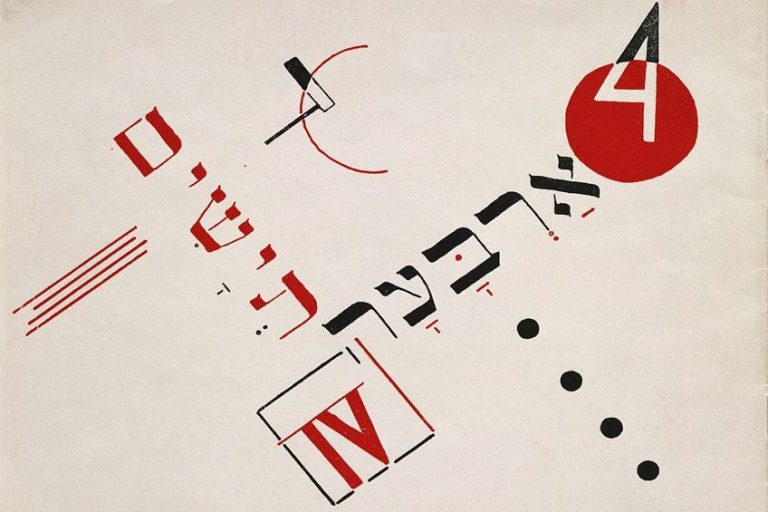
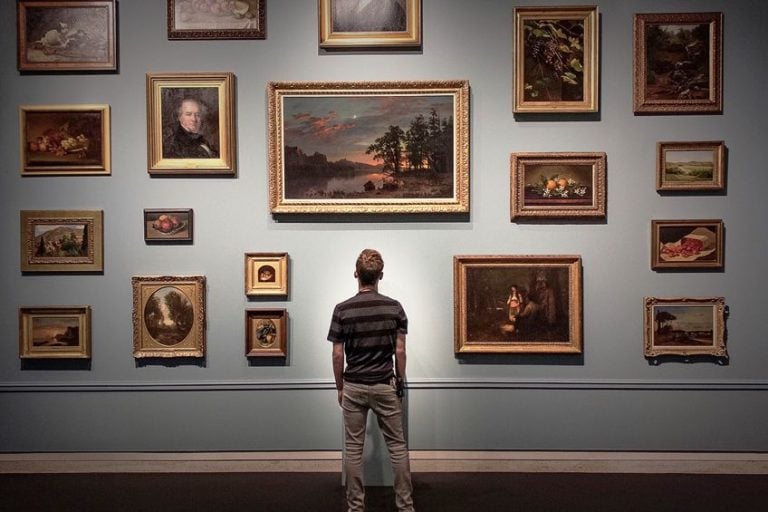
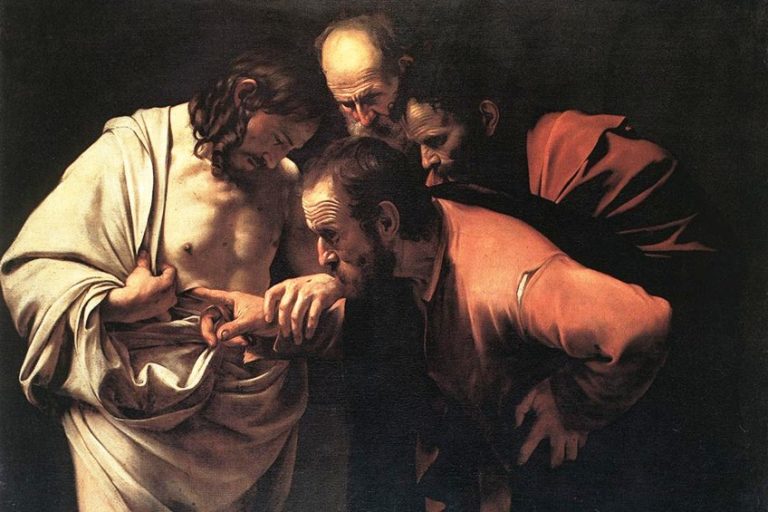
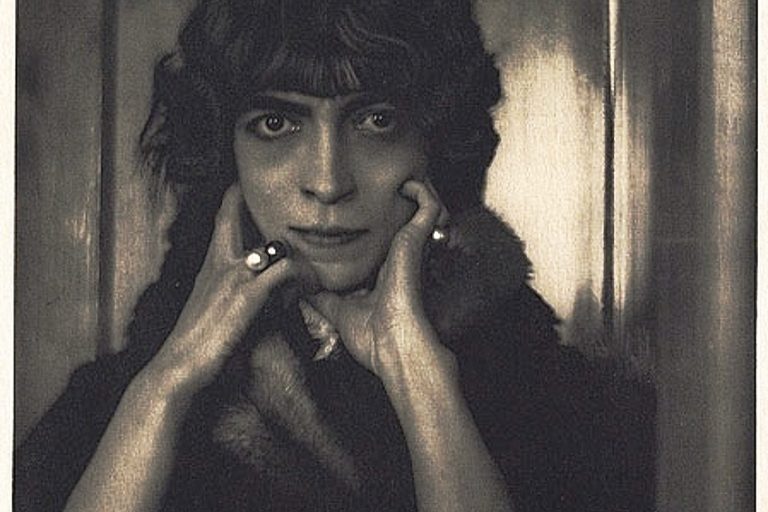
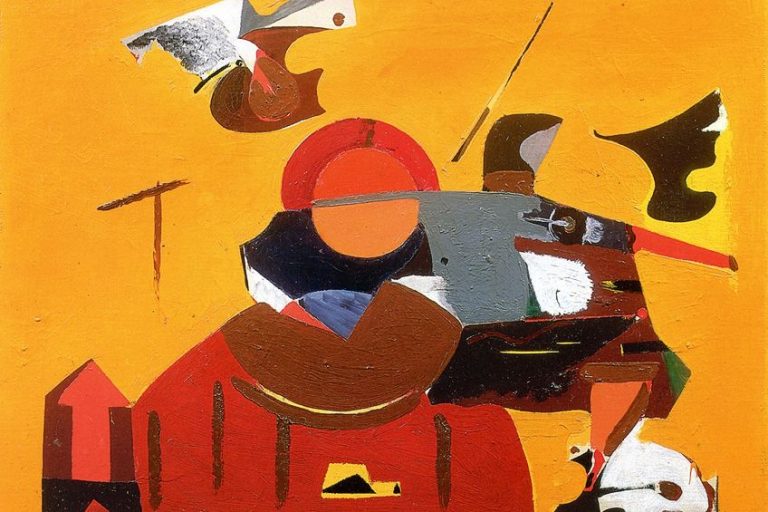


Having buried a child, I am appalled at the unearthing of Egyptian tombs. It is another aspect of the disrespect shown to the Egyptians. Please stop. I am sure Europe has enough in the way of artefacts.